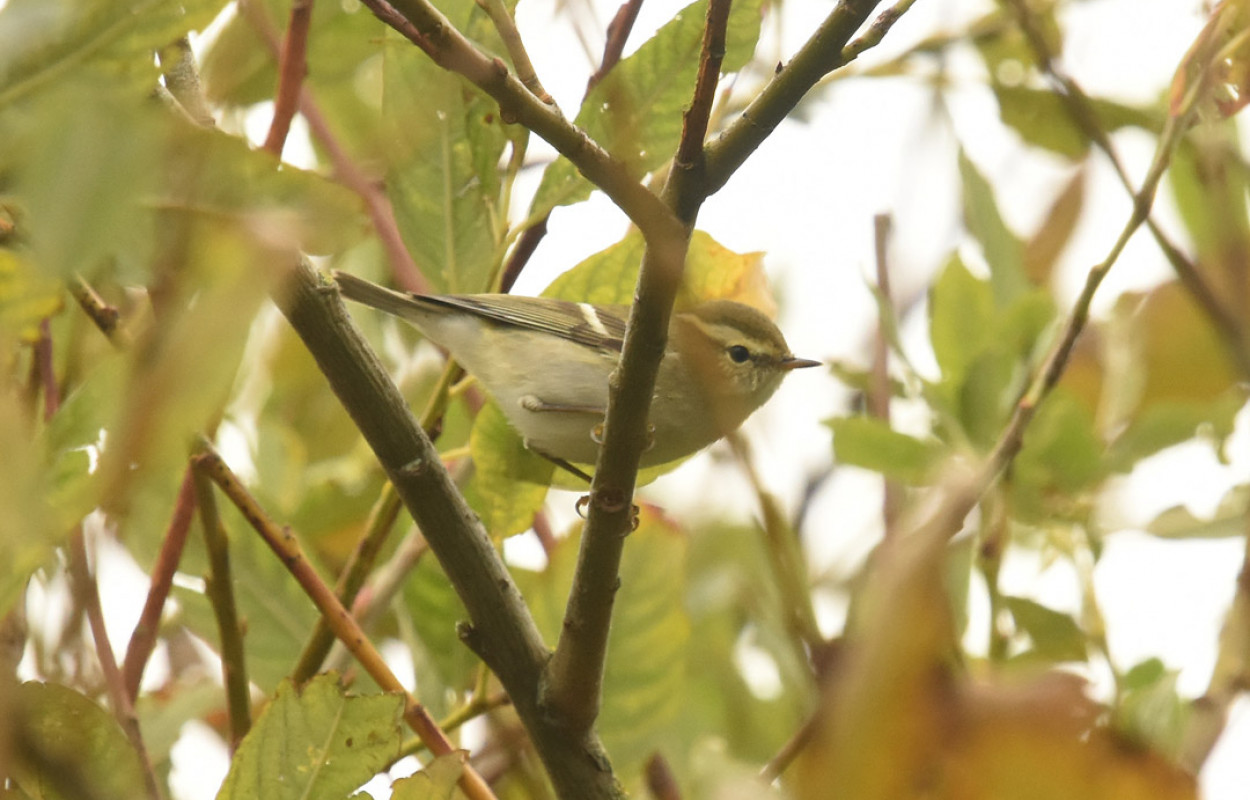The Yellow-browed Warbler (Phylloscopus inornatus) as a model to understand the mechanisms of vagrancy and its potential significance for the evolution of new migratory routes

Author(s): Dufour, P., Åkesson, S., Hellström, M., Hewson, C., Lagerveld, S., Mitchell, L., Chernetsov, N., Schmaljohann, H. & Crochet, P-A.
Published: December 2022
Journal: Movement Ecology
Digital Identifier No. (DOI): 10.1186/s40462-022-00345-2
In addition to their regular movements, birds are also known for their propensity to move beyond their geographic range limits, a phenomenon known as vagrancy, and a behaviour that provides birdwatchers with an opportunity to encounter species new to their local area. The earliest stages in the evolution of new migration routes can easily be confused with vagrancy – both involve small numbers of individuals encountered outside of their regular breeding, non-breeding or migratory ranges. If sufficient individuals survive the rigours of these journeys, return to their breeding grounds and pass on their new migration route to their offspring then a new migration route can evolve.
This paper uses the Yellow-browed Warbler as a case study to explore the challenges of distinguishing regular migration from vagrancy. This Siberian species normally winters in southern Asia but has increased in occurrence in Western Europe over recent years. The researchers review the available evidence, suggesting that the Yellow-browed Warbler is still mostly a vagrant in Western Europe, but might be establishing a new migration route initiated by vagrants. Importantly, the paper then outlines possible approaches to establish whether some individuals really undertake regular migratory movements between Western Europe and Siberia. By doing this, the researchers lay the foundations for future work centred on this enigmatic species.
Abstract
Notes
Authors of this study warmly thank: Fair Isle Bird Observatory, the EURING organisation, Hisko de Vries (https://waarneming.nl) and Jochen Dierschke for the data used to illustrate this paper; all the European volunteer observers and ringers who have contributed to compiling these occurrence and ringing data. Authors express their gratitude to Christophe de Franceschi, Bo Petersson, Anatoly Shapoval, Stephan Tillo and Maxime Zucca.This work has been supported by a PhD grant to P.D. awarded by the Labex OSUG@2020 (Investissements d’avenir – ANR10LABX56). Funding was granted from the Deutsche Forschungsgemeinschaft (DFG) within the Sonderforschungsbereich (SFB) 1372 “Magnetoreception and Navigation in Vertebrates” (INST 184/203–1, project number 395940726) to H.S. S.Å. was supported by project grants from the Swedish Research Council (2016–05342) and the Carl Trygger Foundation (CTS: 17518), and a Linnaeus grant (349–2007-8690) from the Swedish Research Council and Lund University to the Centre for Animal Movement Research (CAnMove) at Lund University. This is contribution no 323 from Ottenby Bird Observatory.







Share this page